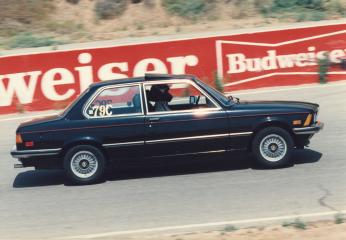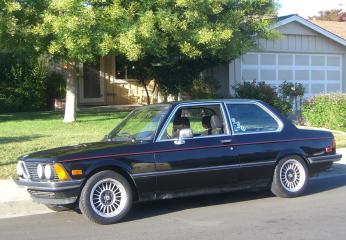|
BMW's M20 "baby six" engine debuted in 1977 in the E21 body --
the original 3-series.
Compared to the 100ish BHP 320i, which the 323i
replaced outside North America, the 323i is wickedly fast.
This example was built in May 1979 and imported into
the United States around 1984 under a one-time exemption from EPA
emissions regulations.
It cannot be licensed in California
but has readily passed a tailpipe smog test in Illinois
and should do fine in most states.
It can handle leaded or unleaded fuel
but demands 91 octane or better fuel.
I'm told that the catalytic converters from a 5-liter Mustang
fit easily in place of the resonators and that this conversion
actually improves performance.
I bought the car in 1987 and subsequently made many improvements
to make the handling match the performance of the (stock) engine.
BMW says the car's top speed is 119 MPH but I've seen
132 MPH, at which point the rev-limiter takes charge.
(The car's top speed should be about 122 MPH now due to the
shorter gearing that was installed.)
It has readily beaten early M3s (E30 body) at Laguna Seca. It
even lapped a Ferrari F40 at Sears Point but I think that had more
to do with the Ferrari's driver.
|


